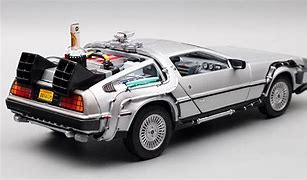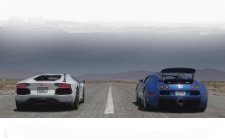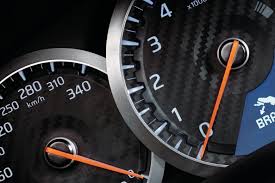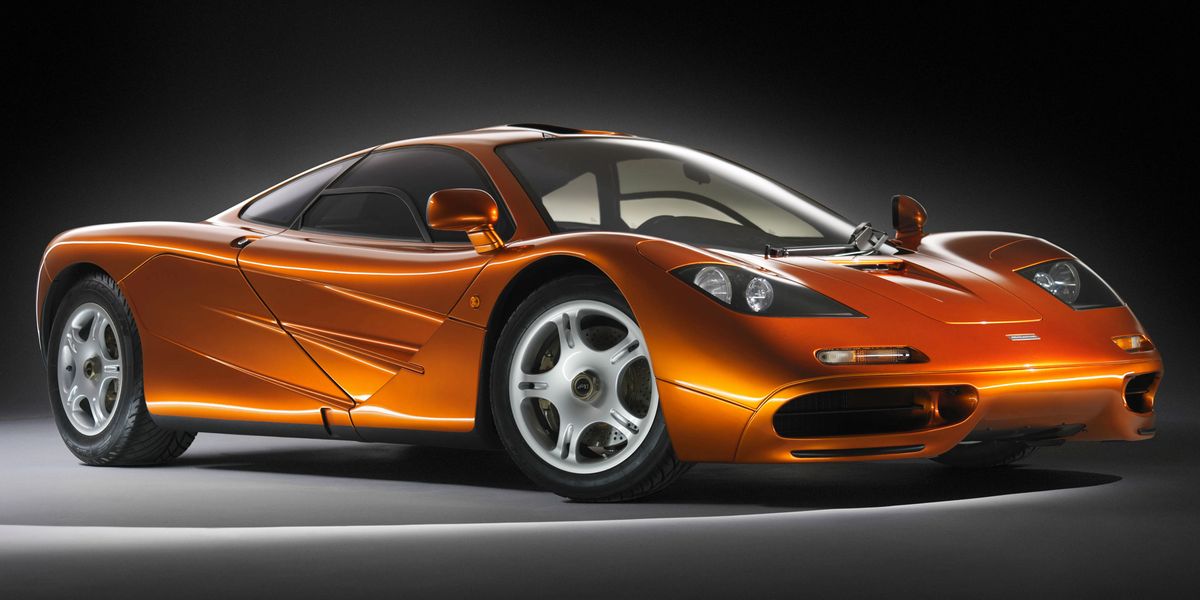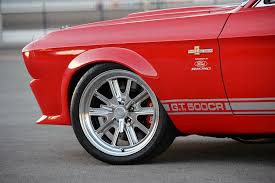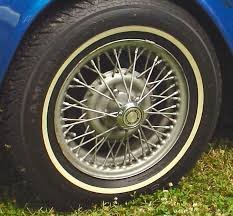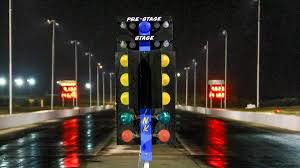A brief history of
Fisker
Introduction
The car manufacturer Fisker has made an important impact on the automotive world. In this article we will give a brief but detailed history of the Fisker marque.
We will look at the origins of Fisker looking at who, why, where and when Fisker was founded. We'll look at the design of the iconic Fisker logo and what are some the more significant Fisker models.
We'll take a glance at what racing history the Fisker has and who some of the most important people have been in the history of Fisker over the years.
Who, where, when and why was
Fisker founded?
Fisker Automotive is a renowned electric vehicle manufacturer that was founded in 2007 by Henrik Fisker and Bernhard Koehler. The company was established in Irvine, California, with the aim of creating sustainable, high-performance electric vehicles that would revolutionize the automotive industry. Fisker's vision was driven by his passion for design, sustainability, and the desire to provide an alternative to traditional gasoline-powered vehicles.
Henrik Fisker, a Danish-born automotive designer, played a pivotal role in the establishment of the company. With a background in automotive design and a reputation for his work at prestigious companies such as BMW and Aston Martin, Fisker brought his expertise and innovative design philosophy to Fisker Automotive. He envisioned creating electric vehicles that not only offered zero-emissions transportation but also incorporated luxurious design elements that would appeal to discerning customers.
One of the key milestones in Fisker's history was the unveiling of their first production vehicle, the Fisker Karma, in 2008. The Karma was a plug-in hybrid electric vehicle that combined an electric powertrain with a small gasoline engine as a range extender. It featured a sleek and stylish design, blending sustainable technology with luxury and performance. The Karma received critical acclaim for its innovative approach to electric vehicles and its striking aesthetics.
Unfortunately, Fisker Automotive faced numerous challenges and setbacks throughout its history. Financial difficulties, production delays, and battery supply issues ultimately led to the company filing for bankruptcy in 2013. However, the brand was later acquired by the Chinese automotive company Wanxiang Group and renamed Karma Automotive, continuing the production of electric vehicles under the Karma brand.
Despite the challenges faced by the company, Fisker Automotive made a significant impact on the electric vehicle industry. Their commitment to sustainability, cutting-edge design, and innovative technology laid the foundation for the future of electric mobility. While the original Fisker Automotive may no longer exist, the legacy of Henrik Fisker and his vision for sustainable luxury vehicles continues to influence the automotive industry.
How did the
Fisker logo originate?

How did the Fisker logo originate?
The logo of Fisker Automotive played an essential role in representing the brand's identity and values. The logo featured a stylized letter "F" in lowercase, which was designed to convey a sense of elegance, modernity, and innovation. The flowing lines of the logo symbolized the sleek and aerodynamic nature of Fisker's electric vehicles.
The color palette chosen for the logo included shades of blue and silver, representing the company's commitment to environmental sustainability and technological advancement. The blue color symbolized the clean energy and eco-friendliness of Fisker's electric vehicles, while the silver conveyed a sense of sophistication and premium quality.
The logo was carefully crafted to evoke a sense of movement and energy, reflecting the dynamic nature of the electric vehicle industry. It aimed to capture the attention of potential customers and communicate Fisker's vision for the future of automotive design and sustainability.
Throughout its history, the Fisker logo underwent subtle refinements to enhance its visual appeal and align with the brand's evolving image. These refinements included minor adjustments to the shape and proportions of the letter "F" to ensure visual balance and readability.
The Fisker logo was a visual representation of the brand's commitment to innovation, sustainability, and luxury. It served as a symbol of Fisker Automotive's vision for electric mobility and communicated their dedication to creating stylish and environmentally friendly vehicles. The logo played a crucial role in establishing brand recognition and capturing the essence of Fisker's unique approach to electric vehicle design.
What are some of the significant
Fisker models?
Fisker, the renowned electric vehicle manufacturer, has produced several remarkable models throughout its history. These vehicles embody the brand's commitment to sustainability, innovation, and high performance. Let's explore some of Fisker's most significant models, with a focus on their higher performance offerings.
In the early years of Fisker's existence, they introduced the Fisker Karma, a groundbreaking plug-in hybrid luxury sedan. Launched in 2011, the Karma featured a sleek design and cutting-edge technology. It combined an electric motor with a gasoline engine to offer a balance between performance and efficiency. With a total output of over 400 horsepower, the Karma could accelerate from 0 to 60 mph in just over six seconds. Its electric range of approximately 50 miles allowed for emission-free driving in urban areas, while the gasoline engine provided extended range for longer journeys.
In the following years, Fisker unveiled the EMotion, an all-electric luxury sedan designed to compete with the leading electric vehicles on the market. The EMotion boasted an impressive range of over 400 miles thanks to its advanced battery technology. Equipped with multiple electric motors, the EMotion delivered exhilarating performance, with an estimated top speed of 161 mph. Its sleek and aerodynamic design, featuring distinctive butterfly doors, captured attention and showcased Fisker's commitment to both form and function.
As Fisker continued to push the boundaries of electric vehicle performance, they introduced the Ocean, an all-electric SUV designed for practicality and sustainability. The Ocean featured a spacious interior with seating for five passengers and an impressive cargo capacity. It incorporated recycled materials throughout its construction, further emphasizing Fisker's commitment to environmental consciousness. With a targeted range of 250 to 300 miles and fast-charging capabilities, the Ocean provided convenient and efficient electric mobility for everyday use.
In recent years, Fisker unveiled the upcoming Fisker Ocean Extreme, a high-performance version of the Ocean SUV. With enhanced power and performance, the Ocean Extreme is expected to deliver an exhilarating driving experience while maintaining the brand's dedication to sustainability. It will feature advanced electric drivetrain technology, aerodynamic enhancements, and sportier design elements to elevate the driving dynamics and appeal to performance-oriented enthusiasts.
Throughout its history, Fisker has demonstrated a commitment to pushing the boundaries of electric vehicle technology and performance. From the groundbreaking Karma to the upcoming Ocean Extreme, Fisker's models showcase their dedication to delivering exciting, sustainable, and high-performance electric vehicles for the future.

One of Fisker's Most Iconic Models
Who are some of the most important people in
Fisker's History
Behind the success of Fisker, there have been several key individuals who have played significant roles in shaping the company and its vision for sustainable mobility. These individuals have brought their expertise, innovation, and leadership to propel Fisker forward in the electric vehicle industry.
Henrik Fisker, the founder and CEO of Fisker Inc., is a renowned automotive designer and entrepreneur. With a passion for design and a deep understanding of the automotive industry, Fisker has been instrumental in shaping the aesthetic and functional aspects of Fisker's vehicles. His previous experience as a designer for prominent automotive brands provided him with invaluable insights into creating visually striking and technologically advanced electric vehicles.
Tony Posawatz, the former CEO of Fisker Automotive, brought his extensive experience in the automotive industry to Fisker. Posawatz played a pivotal role in overseeing the development and launch of the Fisker Karma, the company's first production model. With a background in engineering and executive leadership, he guided Fisker through critical stages of growth and helped establish the brand as a player in the electric vehicle market.
Adrian Hallmark, the current CEO of Fisker Inc., joined the company in 2020. With a wealth of experience in the luxury automotive sector, Hallmark has brought valuable insights and strategic direction to Fisker. His previous roles at renowned automakers have provided him with a deep understanding of the global automotive market and the unique demands of luxury electric vehicles.
Rebecca Lindland, the Chief Communications Officer at Fisker Inc., has been instrumental in shaping Fisker's public image and communicating the brand's values and mission. With her expertise in automotive industry analysis and strategic communications, Lindland has played a crucial role in promoting Fisker's commitment to sustainability and electric mobility.
These individuals, along with the dedicated team at Fisker, have collectively contributed to the development and success of the company. Their expertise, vision, and leadership have been instrumental in driving Fisker's innovation, pushing the boundaries of electric vehicle technology, and establishing the brand as a leader in sustainable mobility.

One of the most influential people in the history of Fisker
Fisker's Racing History
While Fisker is primarily known for its focus on luxury electric vehicles, the company has also made forays into the world of racing. Racing has served as a platform for Fisker to showcase the performance capabilities of its electric powertrains and demonstrate the potential of sustainable mobility in a high-performance setting.
Fisker has participated in various racing events and competitions to highlight the speed, agility, and efficiency of its electric vehicles. One notable racing venture for Fisker was the participation in the 2012 FIA Formula E Championship. Formula E is an all-electric racing series that aims to promote sustainable technology and raise awareness about electric mobility. Fisker joined forces with the Dragon Racing team and provided the Karma plug-in hybrid as the official safety car for the championship.
In addition to Formula E, Fisker has also ventured into the world of endurance racing. The company unveiled the Fisker Atlantic GT concept, a high-performance electric vehicle designed specifically for endurance racing. The Atlantic GT concept showcased Fisker's commitment to pushing the boundaries of electric vehicle technology in the demanding environment of endurance racing.
Furthermore, Fisker has been involved in various promotional and exhibition races to demonstrate the capabilities of its electric vehicles. These events have provided an opportunity for Fisker to showcase the performance, handling, and acceleration of its electric powertrains in a competitive setting. By participating in racing events, Fisker aims to challenge conventional notions of performance and prove that sustainable mobility can coexist with thrilling racing experiences.
Through its involvement in racing, Fisker has not only showcased the performance capabilities of its electric vehicles but has also contributed to the development of electric vehicle technology. The learnings and advancements gained from racing have helped shape and refine Fisker's electric powertrains, enhancing their efficiency, power output, and range.
Fisker's foray into racing has served as a platform to demonstrate the company's commitment to sustainability and the potential of electric mobility in high-performance settings. By pushing the boundaries of electric vehicle technology on the race track, Fisker has positioned itself as a leader in the pursuit of sustainable racing and has contributed to the ongoing development of electric mobility.
Summary
Fisker is a prominent car manufacturer known for its luxury electric vehicles and commitment to sustainability. The company has made significant strides in the automotive industry by developing high-performance electric cars that combine cutting-edge technology with elegant design. With a focus on sustainability and innovation, Fisker has positioned itself as a key player in the electric vehicle market.
Founded in 2007 by Henrik Fisker, the company has been driven by a vision to create environmentally friendly vehicles without compromising on style and performance. Fisker's lineup of electric vehicles, including models like the Fisker Karma and Fisker Ocean, embodies this vision by offering impressive range, rapid acceleration, and sleek aesthetics. The brand has garnered attention for its advanced battery technology, regenerative braking systems, and eco-friendly materials used in the construction of its cars.
Fisker has also made an impact in the racing world by participating in events such as the FIA Formula E Championship. By showcasing the performance capabilities of its electric powertrains in high-performance racing environments, Fisker has proven that sustainability and thrilling driving experiences can go hand in hand. Through its involvement in racing, Fisker has not only pushed the boundaries of electric vehicle technology but has also contributed to the development of sustainable mobility as a whole.
Overall, Fisker's commitment to sustainable luxury and innovative electric vehicle technology has solidified its position as a forward-thinking car manufacturer. With its stylish designs, impressive performance, and focus on environmental responsibility, Fisker continues to be at the forefront of the electric vehicle revolution.
View Fisker Car Specifications
More Manufacturer Histories.








